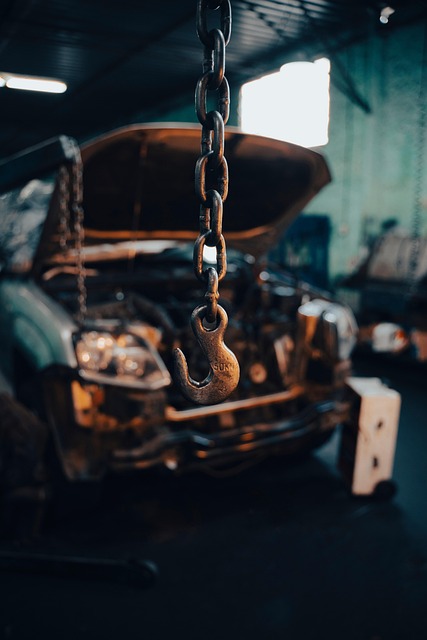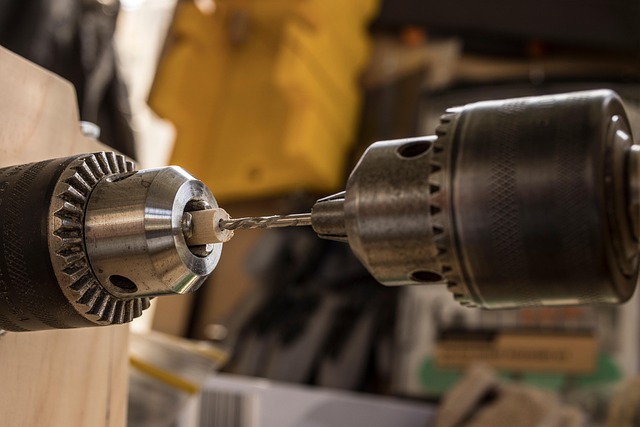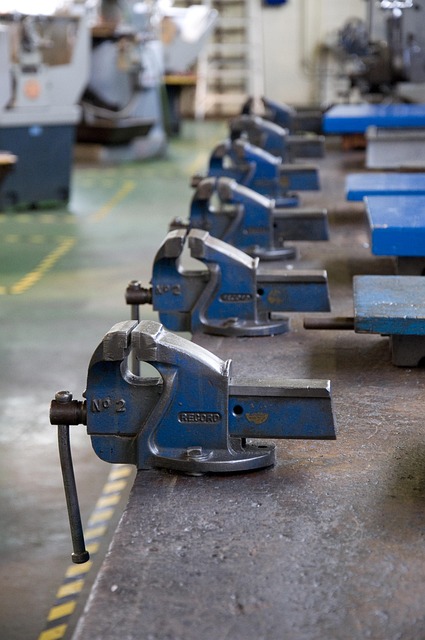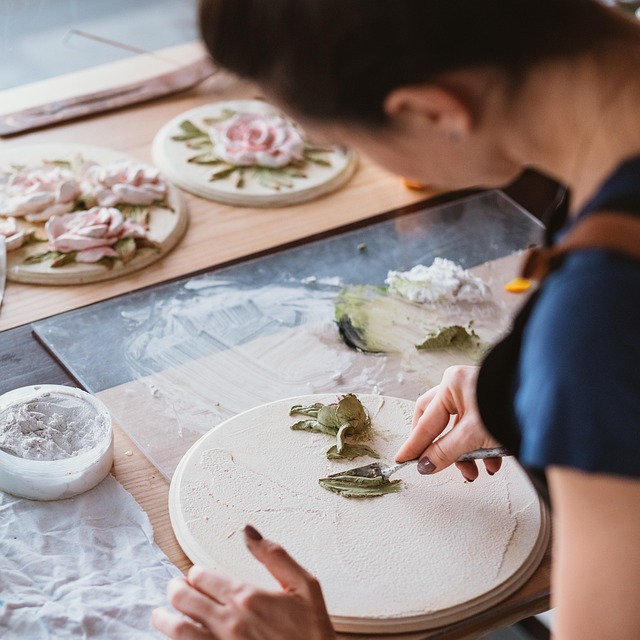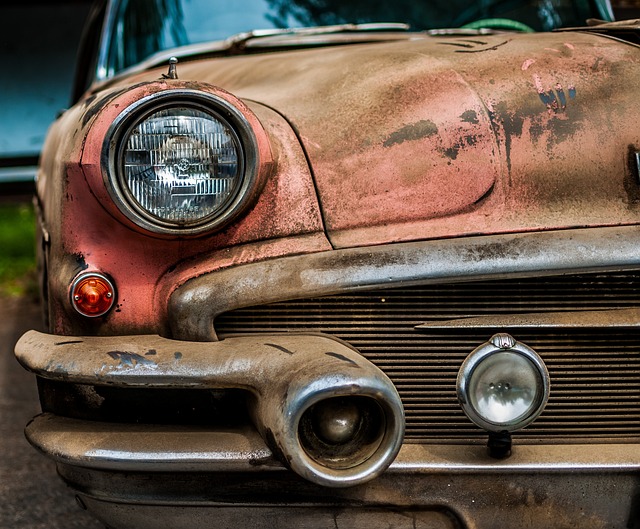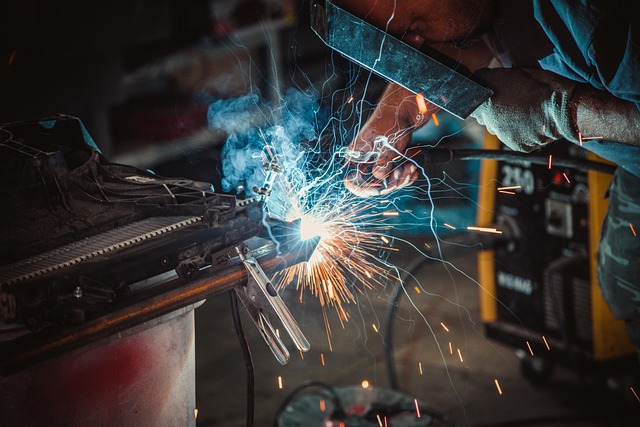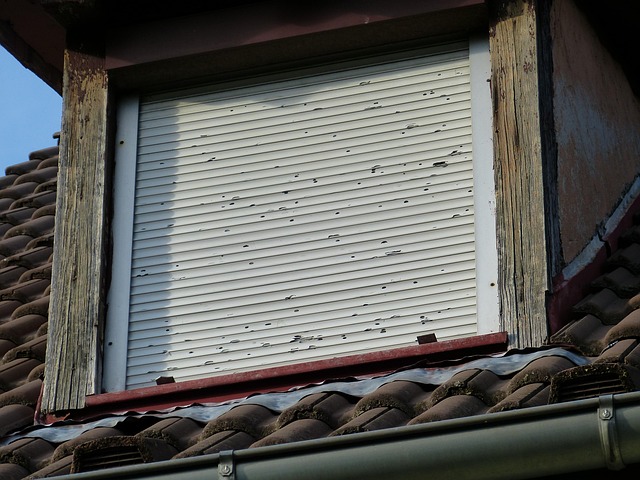Winter's extreme conditions cause significant rust damage to metal car surfaces, necessitating prompt rust repair solutions from collision shops. By identifying early corrosion signs, applying specialized treatments, and implementing proactive measures like protective coatings, these professionals safeguard vehicles' structural integrity and aesthetic appeal. Proper post-repair care, including detailed cleaning and sealing, further prevents future rust outbreaks for longer-lasting results in harsh winter environments.
After a long winter, many structures suffer from damage, particularly metal surfaces which can be left susceptible to rust. Understanding the impact of winter weather on metal is key to preventing future issues. This article explores effective strategies employed by shops to mitigate rust repair after winter damage. From proactive measures like surface treatments and coatings to post-repair care practices, we delve into ensuring longevity and minimizing future outbreaks of unsightly rust.
- Understanding Winter Damage and Its Impact on Metal Surfaces
- Proactive Measures: Shop Strategies for Rust Prevention
- Effective Post-Repair Care to Minimize Future Rust Outbreaks
Understanding Winter Damage and Its Impact on Metal Surfaces

Winter can be a harsh season for metal surfaces, leaving them vulnerable to damage from snow, ice, and cold temperatures. As winter transitions into spring, many vehicle owners start noticing signs of rust repair after winter damage. Rust forms when moisture seeps into tiny cracks in the paint or metal, leading to oxidation over time. The extreme cold can accelerate this process, causing visible stains on car bodies, fenders, and other metal components.
Shops offering collision repair services and car restoration understand these challenges. They employ specialized techniques and products to address winter damage before it becomes a more significant issue. An auto body shop’s expertise lies in identifying subtle signs of corrosion and implementing effective rust repair solutions. By doing so, they help maintain the structural integrity and aesthetic appeal of vehicles, ensuring that customers don’t have to deal with unsightly rust spots or more extensive damage later on.
Proactive Measures: Shop Strategies for Rust Prevention

Shops employ proactive measures to prevent future rust repair after winter damage by implementing several strategies designed to safeguard vehicles against corrosion. One key approach involves thorough inspections and regular washing, especially for vehicles stored outdoors during colder months. By identifying and addressing potential rust spots early on, shops can mitigate extensive damage later.
Additionally, professional detailing services play a crucial role in rust prevention. These include applicating protective coatings, sealingants, and undercoating to vulnerable areas like panels, fenders, and wheel wells. Shops also offer dent removal services to fix any winter-induced dents that could weaken metal surfaces, making them more susceptible to rust. Many collision centers further enhance protection through comprehensive vehicle restoration processes, ensuring each repair is not just functional but also aesthetically pleasing and long-lasting.
Effective Post-Repair Care to Minimize Future Rust Outbreaks

After repairing winter damage to vehicles, proper post-repair care is essential to prevent future rust outbreaks. A collision repair shop will often recommend a comprehensive cleaning and sealing process to ensure lasting protection. This involves removing any debris or salt residue left over from the initial damage, as these can accelerate rust formation.
The auto bodywork experts at reputable shops may also apply special corrosion-inhibiting coatings or undercoats that act as a barrier against moisture and environmental elements. These treatments not only protect the vehicle’s metalwork but also serve as a base for future paint jobs, ensuring longer-lasting results and minimizing the need for frequent repairs. Effective post-repair care is a proactive step towards maintaining the vehicle’s structural integrity and preserving its aesthetic appeal, especially during the challenging conditions of winter.
Winter can be harsh on metal surfaces, leaving them vulnerable to rust after repair. However, shops employ strategic measures like regular cleaning, applying protective coatings, and implementing post-repair care routines to prevent future rust outbreaks. By understanding the impact of winter damage and adopting proactive approaches, these businesses safeguard their repairs, ensuring a longer lifespan for fixtures and equipment. Thus, with the right strategies in place, it’s possible to effectively manage and minimize rust repair after winter damage.






